Time has a way of transforming once-bustling destinations into quiet shadows of their former glory. Economic shifts, environmental changes, and evolving travel patterns have left many once-popular locations struggling to maintain their former status. These places tell fascinating stories of boom and bust, leaving behind remarkable remnants of their heyday that draw curious visitors seeking to experience history firsthand.
Here is a list of 20 remarkable destinations that once drew crowds but now drift slowly into the pages of history, each preserving unique elements of their glory days.
Atlantic City
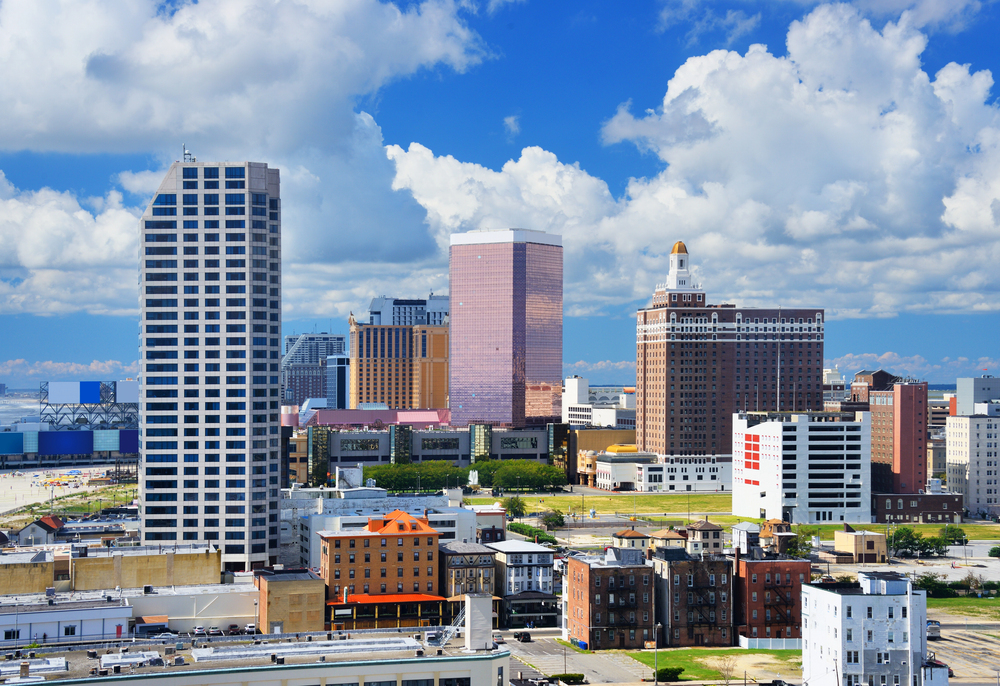
This former crown jewel of the East Coast entertained millions during its golden age as ‘America’s Playground’ in the early 20th century. The world’s first boardwalk once hosted elaborate rolling chairs and fashion shows where visitors competed to display the latest styles.
Many of the grand hotels that hosted celebrities and politicians now stand empty or have been demolished, leaving gaps in the famous skyline. Modern casino competition from neighboring states has reduced the gaming industry that once promised to revitalize the city. The historic Steel Pier, which once featured diving horses and famous entertainers, now operates as a modest amusement park.
Salton Sea
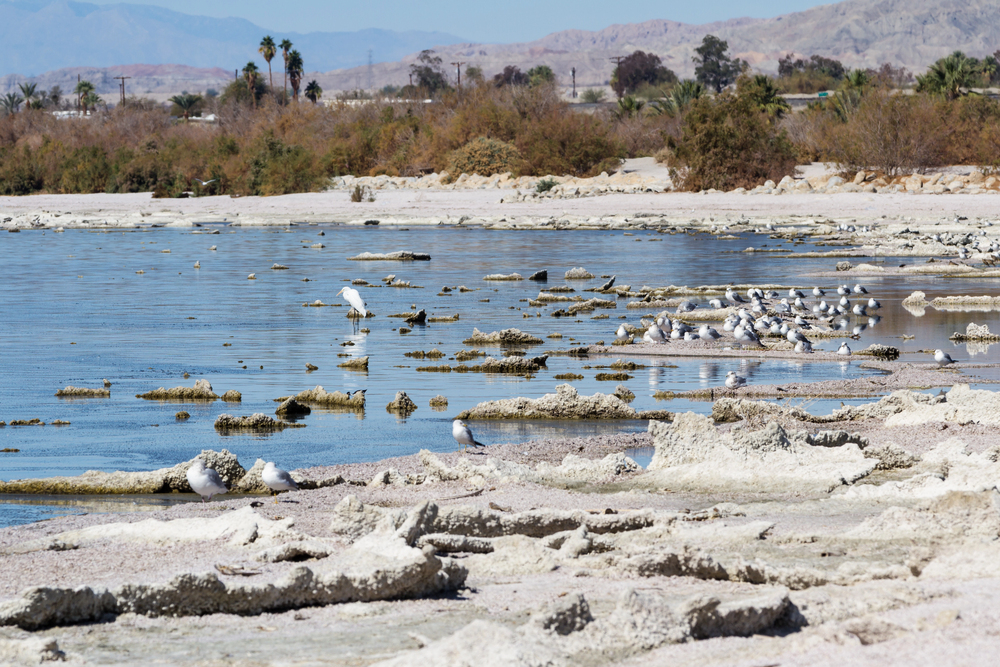
California’s largest lake transformed from a booming resort destination in the 1950s to an environmental challenge today. Glamorous yacht clubs and beach resorts once drew Hollywood celebrities to this desert oasis created by an engineering accident in 1905.
Rising salinity and agricultural runoff have turned the once-thriving fishery into a graveyard of millions of fish that regularly wash up on the shoreline. Former beachfront properties now sit hundreds of feet from the receding shoreline, their foundations surrounded by crusty salt deposits.
The few remaining residents face increasing challenges as the lake continues to shrink and salt levels rise.
Like Travel Pug’s content? Follow us on MSN.
Gary
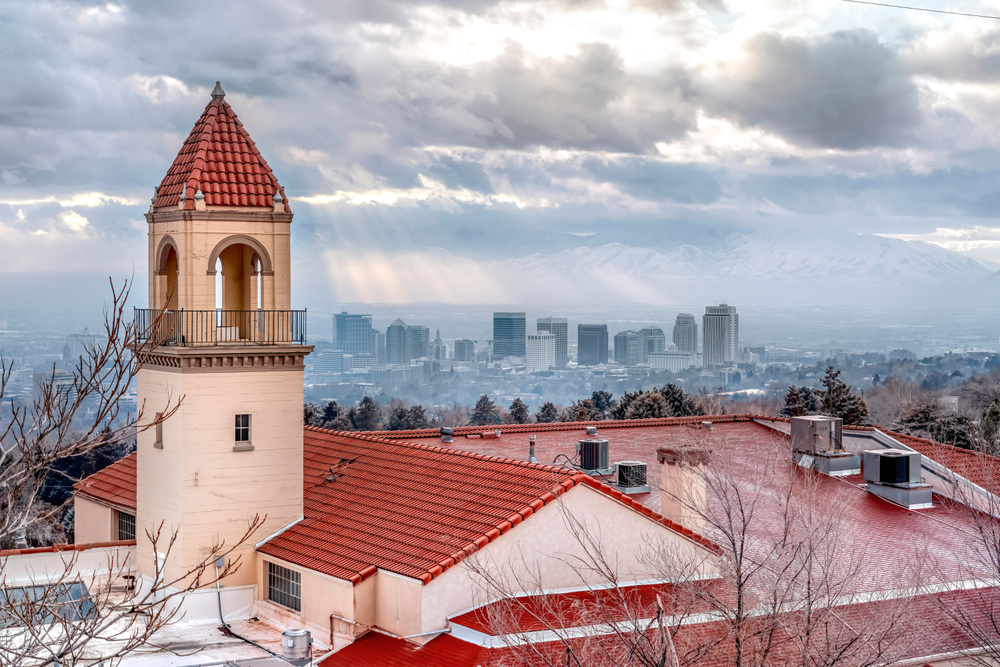
This Indiana city embodied the American industrial dream, built from scratch by U.S. Steel in 1906 as a model manufacturing community. The downtown area once boasted luxury hotels, theaters, and department stores, serving a population that peaked at 178,000 in 1960.
The city’s architecture includes remarkable examples of Art Deco and Neoclassical styles, though many buildings now stand empty and decaying. The famous Palace Theater, which hosted everyone from Frank Sinatra to Michael Jackson, now serves as a haunting reminder of the city’s entertainment heritage.
Population decline continues as the city struggles to reinvent itself in the post-industrial era.
Pyramiden

This abandoned Soviet mining town in the Arctic archipelago of Svalbard remains frozen in time since its abandonment in 1998. The world’s northernmost swimming pool and grand cultural center still contain their original furnishings, preserved by the Arctic climate.
Elaborate Socialist Realist murals and a bust of Lenin overlook empty streets once home to 1,000 residents. The town’s buildings were constructed to impressive standards, using materials and architectural techniques meant to showcase Soviet capabilities.
Today, a handful of Russian guides maintain the site as a tourist destination, though polar bears occasionally outnumber human visitors.
Kolmanskop
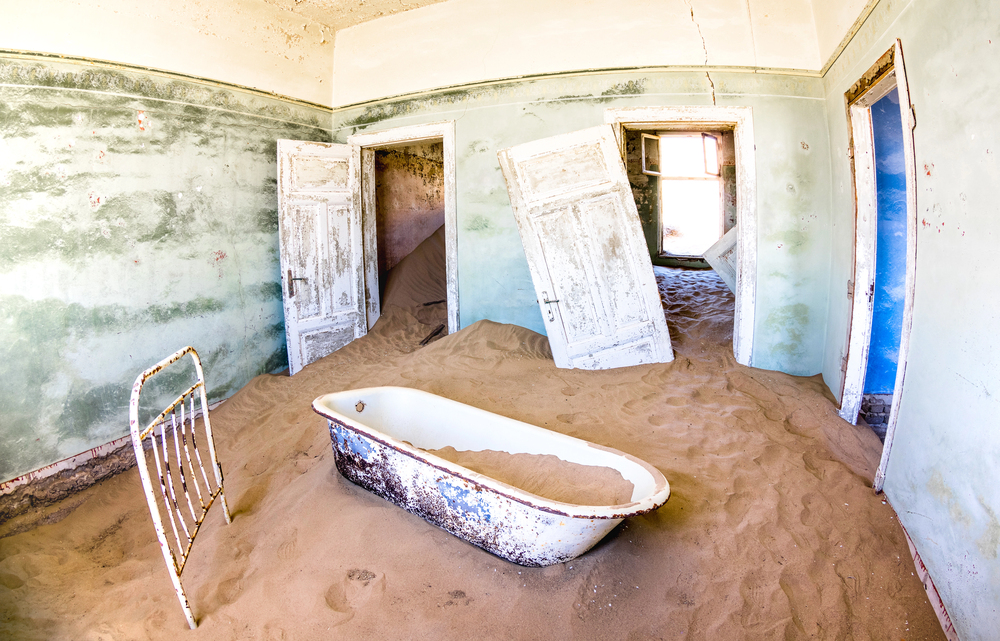
This former diamond mining town in Namibia has been slowly reclaimed by the desert since its abandonment in 1954. The once-grand German colonial buildings hosted elegant parties and cultural events for wealthy miners and their families.
Houses designed to withstand the desert heat are now filled with sand that drifts through broken windows and doorways. The town’s hospital was the first in southern Africa to own an X-ray machine, highlighting its former prosperity and importance.
Photographers now flock to capture images of elegant European architecture being consumed by African desert dunes.
Like Travel Pug’s content? Follow us on MSN.
Hashima Island
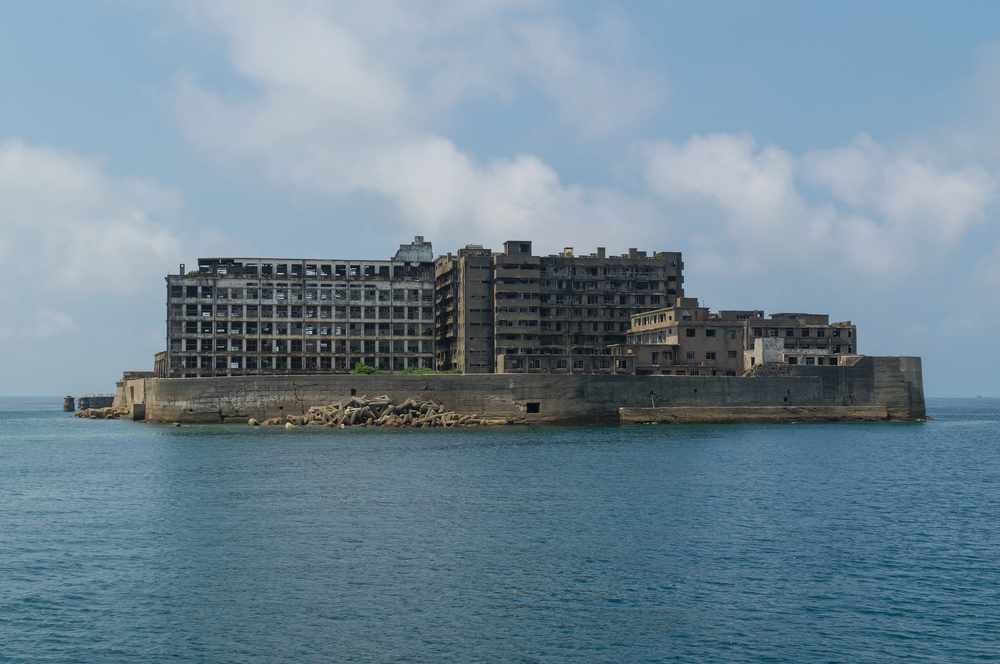
Japan’s infamous ‘Battleship Island’ once housed the world’s highest population density in its concrete apartment blocks. The island’s coal mines fueled Japan’s industrial revolution, supporting a community of 5,000 people on just 16 acres.
Apartment buildings, schools, and hospitals were built up rather than out to maximize the limited space available. The entire population evacuated within a few months after the mines closed in 1974, leaving behind a complete urban time capsule.
The island now serves as a controversial tourist destination and occasional movie set.
Bodie
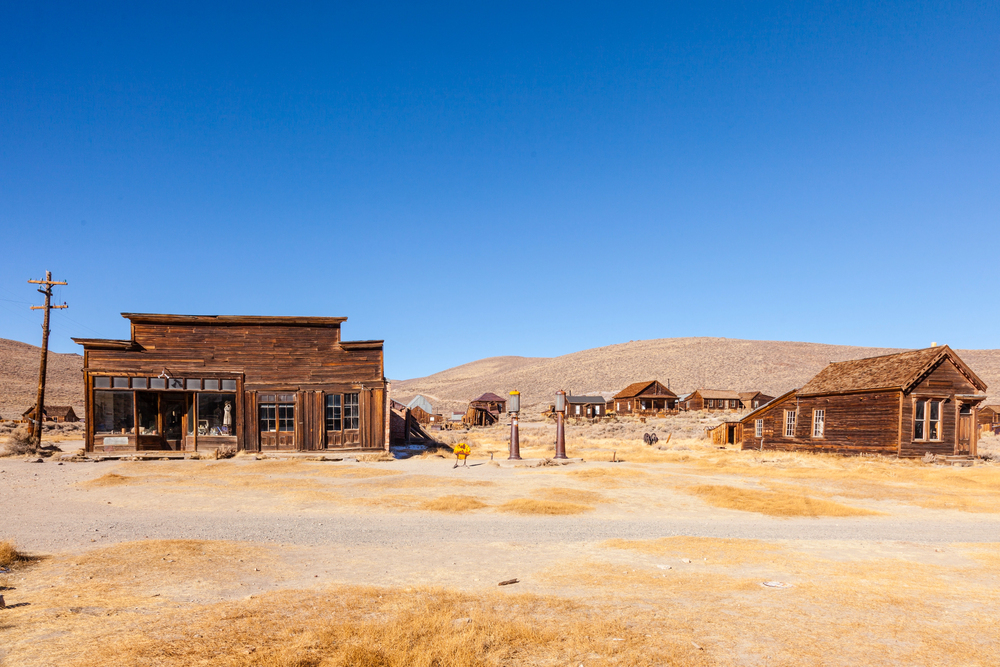
This California gold-mining town remains in an official state of ‘arrested decay,’ preserving its 1880s appearance. The town once supported 10,000 residents with 65 saloons along its main street, earning a reputation for lawlessness and wild living.
Interiors remain exactly as they were left, with store shelves still stocked with century-old goods. The harsh climate at 8,379 feet elevation helps preserve buildings and artifacts in nearly original condition.
Park rangers maintain the site without restoration, allowing natural decay while preventing vandalism and theft.
Centralia
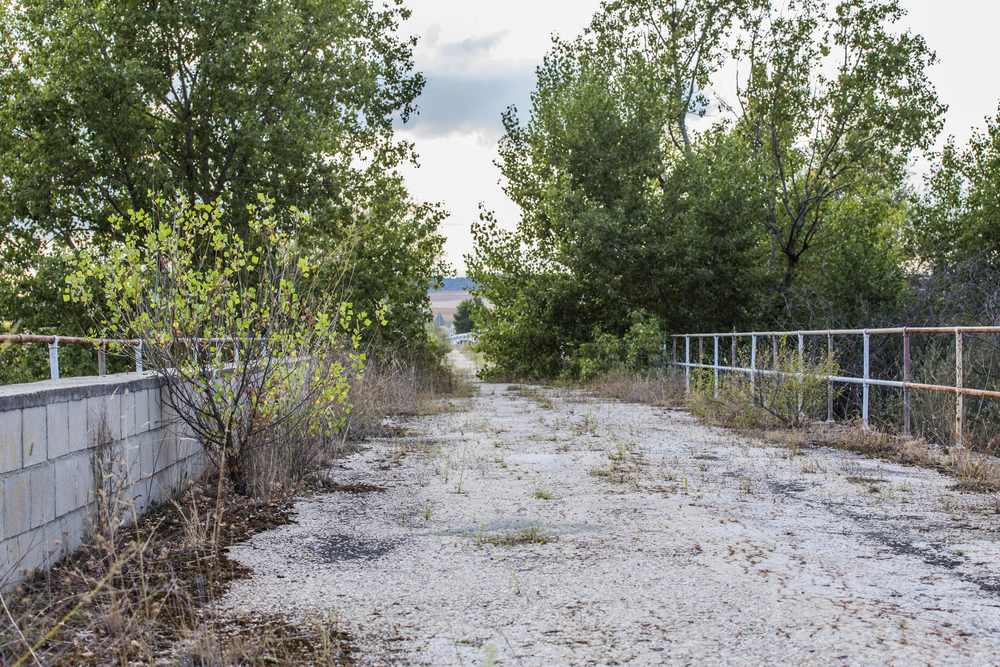
This Pennsylvania town has been slowly emptying since an underground coal fire started in 1962 and continues to burn today. The population dropped from over 1,000 to fewer than 10 residents as toxic gases and ground subsidence forced evacuations.
Steam still rises from cracks in the abandoned streets, and new surface collapses occasionally appear without warning. The local postal service retired the town’s ZIP code in 2002, making it one of the few places in America to officially cease existing.
The remaining residents won the right to stay in their homes for their lifetimes, though no new construction is permitted.
Like Travel Pug’s content? Follow us on MSN.
Varosha
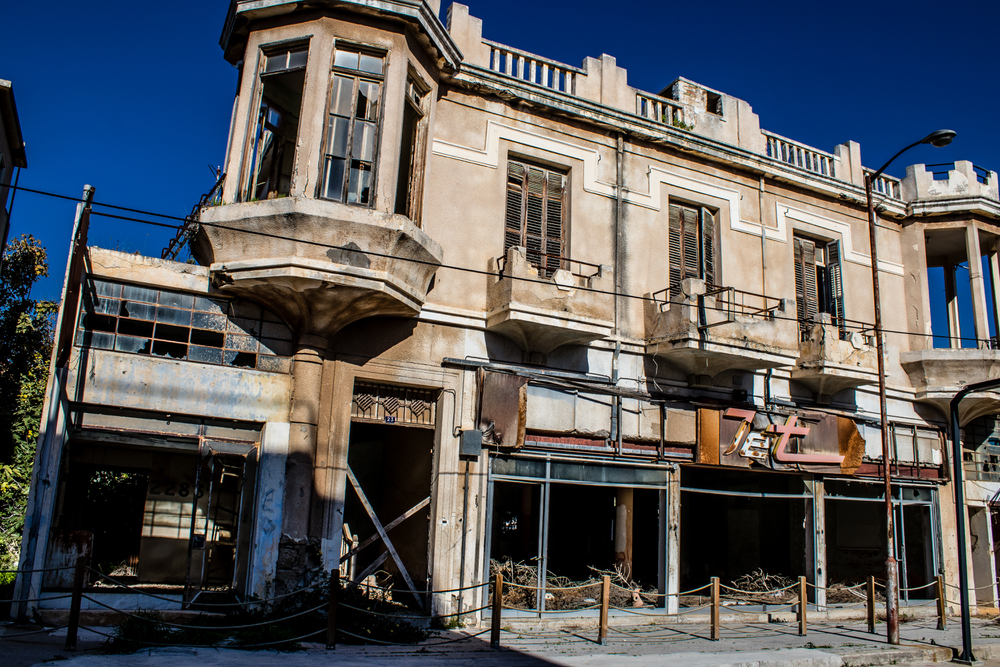
This abandoned resort district in Cyprus has remained frozen in time since the Turkish invasion of 1974. High-rise hotels still contain personal belongings and shop displays from the day residents fled with just hours’ notice.
The district once hosted celebrities like Elizabeth Taylor and Richard Burton in its luxury accommodations. Car dealerships still display 1974 models that have never been driven, their paint oxidized by decades of salt air.
The area remains under military control, with access restricted to authorized personnel and occasional guided tours.
Craco
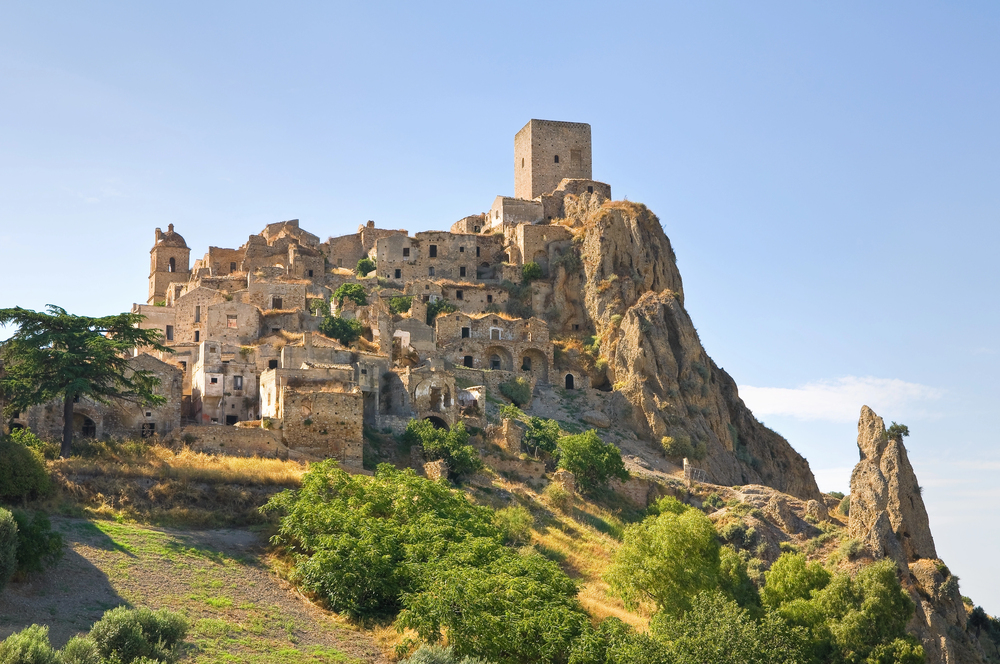
This medieval Italian town stands empty after geological instability forced the evacuation of its last residents in 1991. The town’s dramatic setting atop a cliff made it naturally defensible but ultimately contributed to its abandonment.
Ancient churches and noble palaces remain standing but continue to deteriorate as the ground beneath them slowly shifts. The site’s dramatic appearance has attracted filmmakers, with scenes from major Hollywood productions filmed among its ruins.
Local families still maintain connections to the town, returning for religious festivals held in the partially restored church.
Times Beach

This former Missouri resort town was permanently evacuated in 1985 due to toxic chemical contamination. The town’s roads had been sprayed with oil containing dioxin in an attempt to control dust, leading to widespread contamination. T
he federal government spent $250 million to buy out and demolish the entire town of 2,000 residents. The site required extensive environmental cleanup before being converted into a state park.
Former residents still hold reunions to maintain connections with their lost community.
Like Travel Pug’s content? Follow us on MSN.
Fordlandia
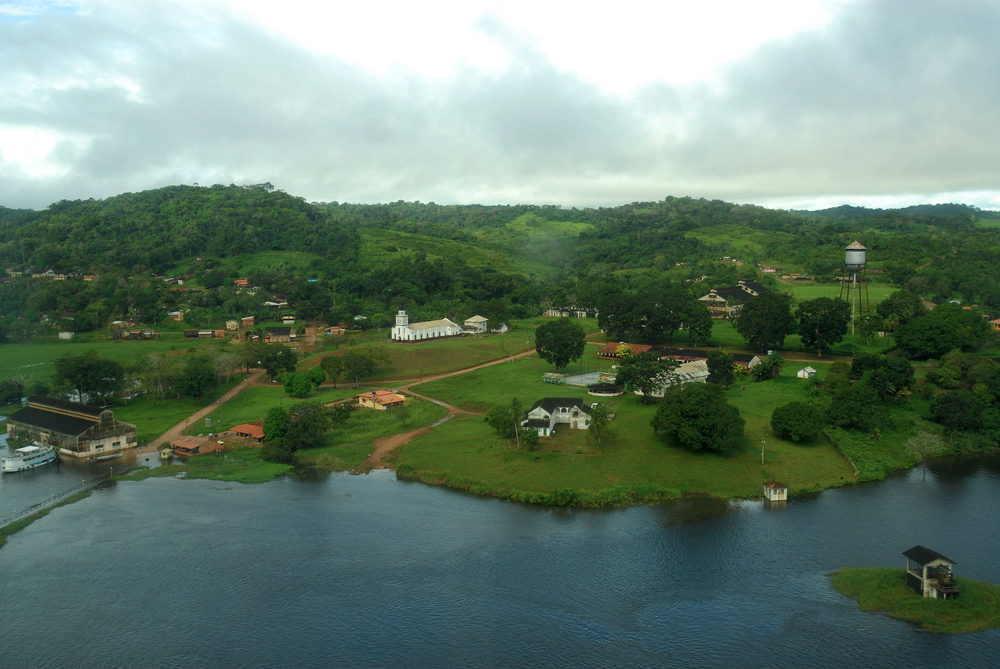
Henry Ford’s failed attempt to create an American industrial town in the Amazon jungle stands as a monument to cultural misunderstanding. The town was built in the 1920s to secure rubber supplies for Ford’s automotive empire, complete with Cape Cod-style houses and mandatory American customs.
Workers rebelled against attempts to impose Michigan-style living conditions in the Amazon climate. The project was abandoned in 1945 after failing to produce any rubber for Ford’s factories.
The site now attracts visitors interested in this unique experiment in industrial colonialism.
Oradour-sur-Glane
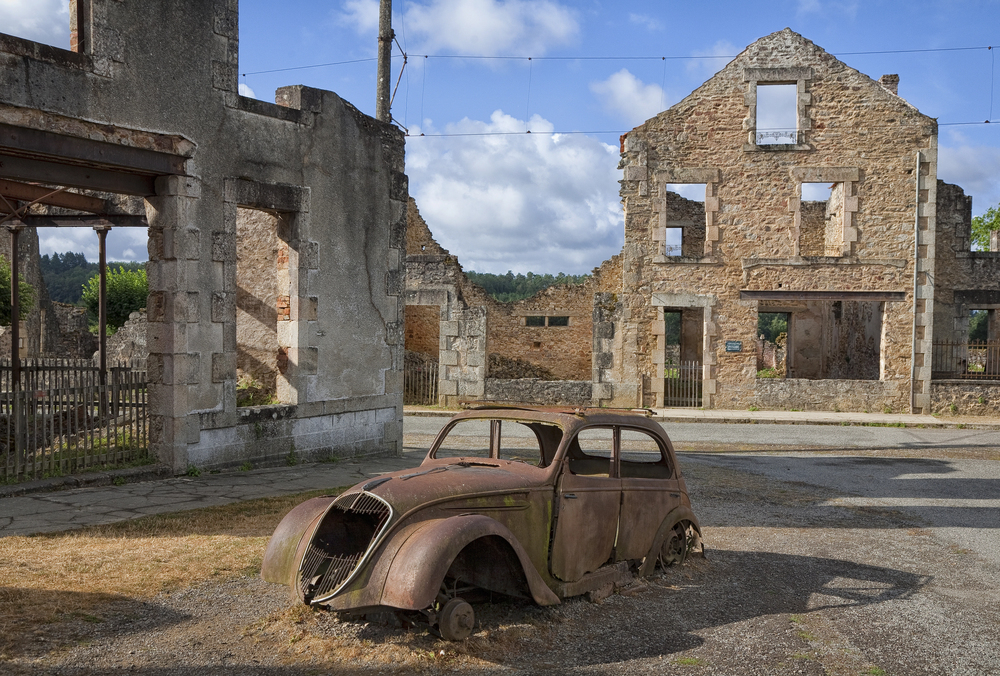
This French village has been preserved exactly as it was left after a Nazi massacre in 1944 destroyed the community. The ruins stand as an official memorial, with signs asking visitors to maintain silence out of respect.
Personal belongings and everyday items remain where they fell during the tragedy, creating a powerful historical testament. The new town was rebuilt nearby, allowing the original site to serve as a permanent reminder. The preservation work continues as buildings slowly deteriorate despite conservation efforts.
Wittenoom
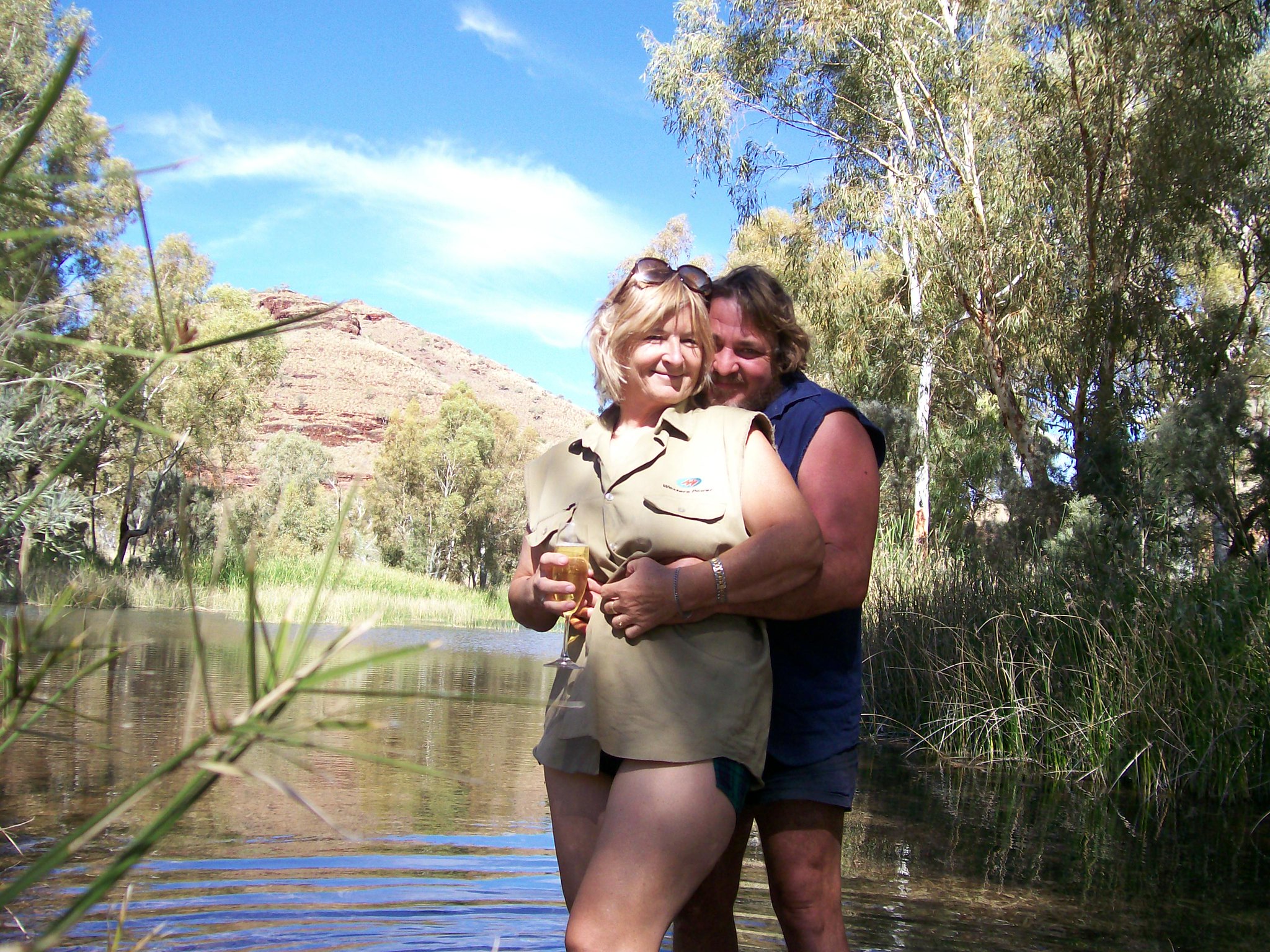
This former asbestos mining town in Western Australia was officially degazetted in 2007 due to deadly contamination. The town once produced 60% of Australia’s asbestos, with thousands of workers and families living nearby.
Warning signs now discourage visitors from entering the area, though some tourists ignore the dangers to photograph the ruins. The few remaining residents have been offered government buyouts to relocate from the contaminated area.
The site serves as a stark reminder of industrial practices that prioritized profit over safety.
Like Travel Pug’s content? Follow us on MSN.
Consonno
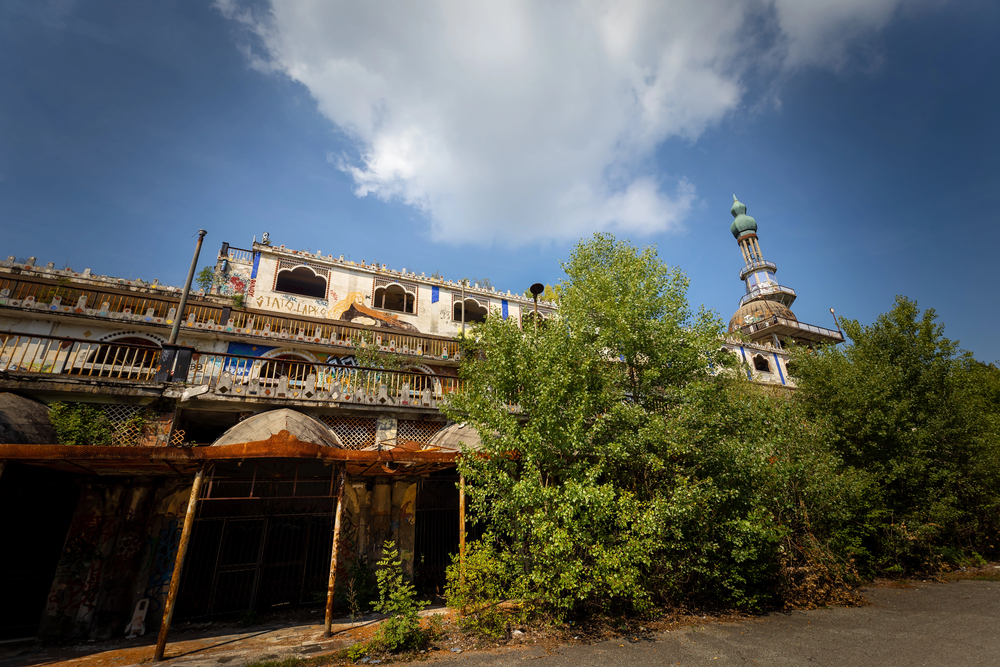
This Italian ‘City of Toys’ was built in the 1960s as a Las Vegas-style resort before being abandoned after a landslide. The eccentric developer destroyed a historic village to build his vision of a modern entertainment destination.
Architectural styles clash wildly, with medieval towers next to miniature Chinese pagodas and Middle Eastern minarets. The grand plans never reached completion before natural disasters and financial problems ended the project.
Young people occasionally hold raves in the ruins, adding modern graffiti to the eclectic mix of styles.
Chloride City

This ghost town in Death Valley National Park has slowly baked in the desert sun since the 1920s. The town once supported several thousand residents with its silver and copper mines high in the Funeral Mountains.
Surviving buildings offer views across Death Valley from their 4,800-foot elevation perch. The harsh climate has preserved many mining artifacts and building foundations in nearly original condition.
Access requires four-wheel drive vehicles and careful navigation through the remote desert landscape.
Tawergha
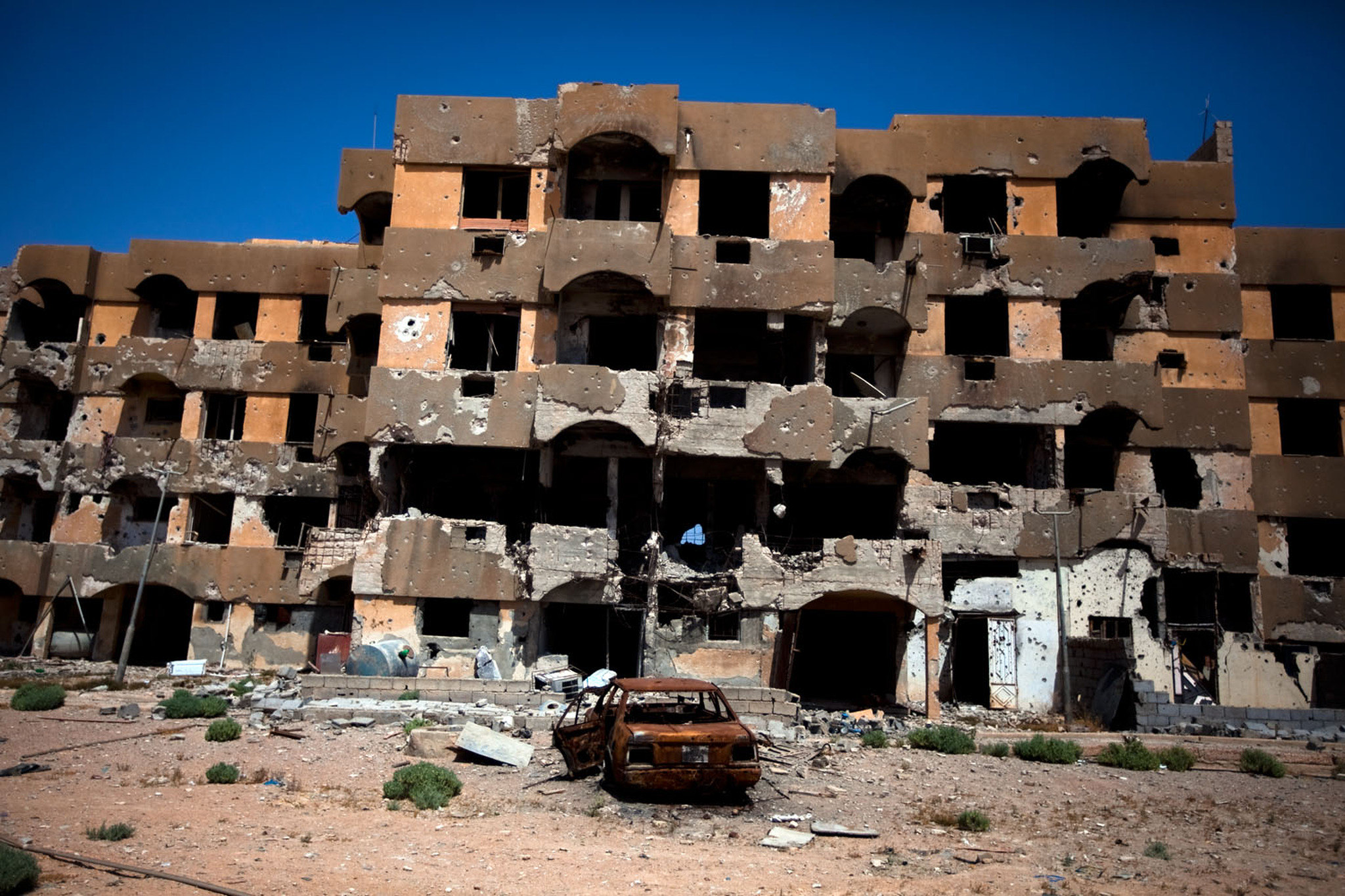
This Libyan city of 30,000 was entirely abandoned during the 2011 civil war and remains empty today. The modern infrastructure and buildings stand deteriorating in the desert climate, gradually being buried by drifting sand.
Schools still contain books and materials from the day the population fled the advancing conflict. Date palms planted along the streets continue to produce fruit that falls unharvested each year. The site demonstrates how quickly modern urban developments can be abandoned and reclaimed by nature.
Like Travel Pug’s content? Follow us on MSN.
Poggioreale
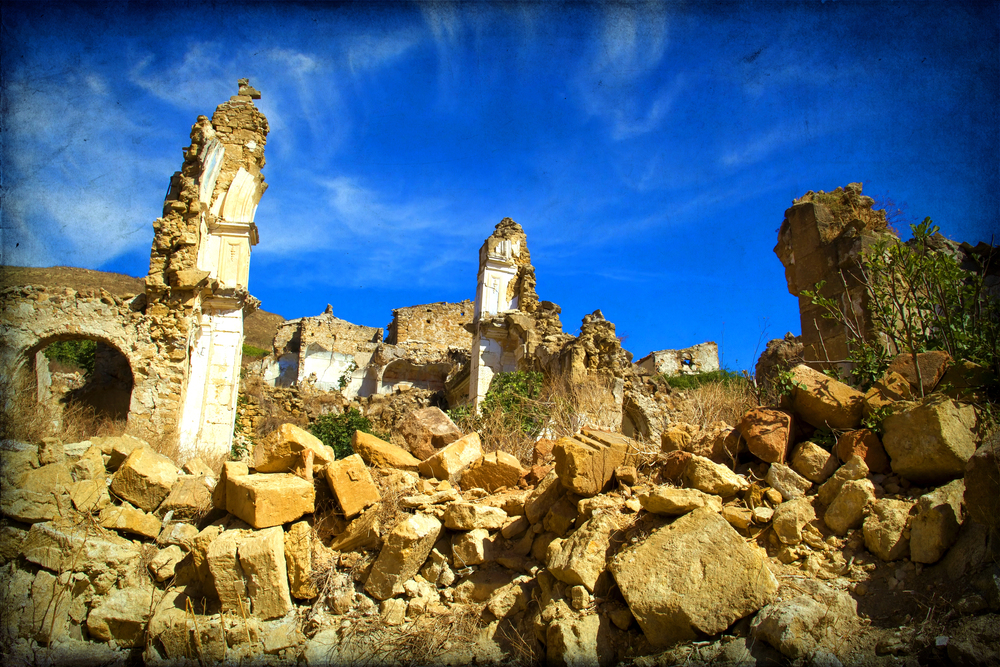
This Sicilian town was abandoned after a 1968 earthquake, with residents relocating to a newly built community nearby. The original baroque architecture remains largely intact, though gradually deteriorating without maintenance.
The town’s grid layout and elegant squares reflect the urban planning ideals of their era. Former residents maintain emotional connections to the site, sometimes conducting tours of their childhood homes.
The empty streets and squares now serve as an open-air museum of Sicilian architectural heritage.
Kayaköy
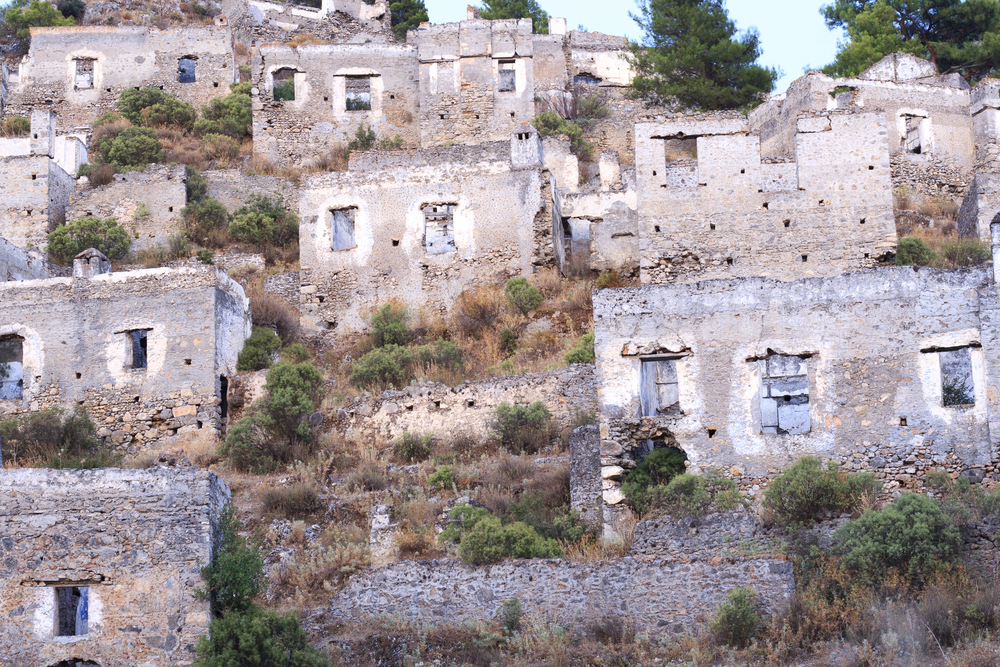
This former Greek town in Turkey has stood empty since its population was expelled in the 1923 population exchange between Greece and Turkey. The hillside contains hundreds of abandoned houses and churches, creating one of the largest ghost towns in Asia Minor.
Traditional building techniques have allowed many structures to survive nearly a century of abandonment. The site serves as an open-air museum demonstrating the region’s lost Greek heritage.
Local tourism initiatives are gradually bringing new life to small sections of the abandoned town.
Plymouth
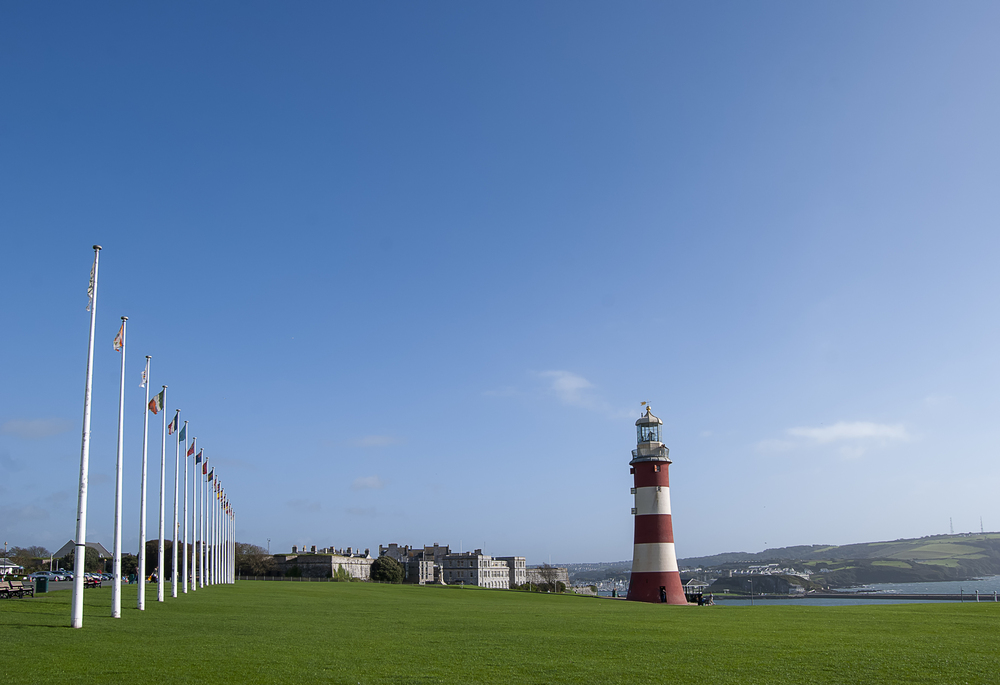
This former Massachusetts whaling port once rivaled New Bedford as a center of the American whaling industry. The town’s waterfront bustled with shipyards, rope walks, and chandleries serving a fleet of over 200 whaling vessels in the mid-1800s.
The discovery of petroleum in Pennsylvania led to a rapid decline in whale oil demand, causing the industry to collapse within a generation. Many of the grand captain’s homes still line the streets, though their crow’s nest lookouts no longer scan the horizon for returning ships.
The town has reinvented itself as a tourist destination, though many historic industrial buildings stand empty or repurposed.
Like Travel Pug’s content? Follow us on MSN.
New World’s Lost Places
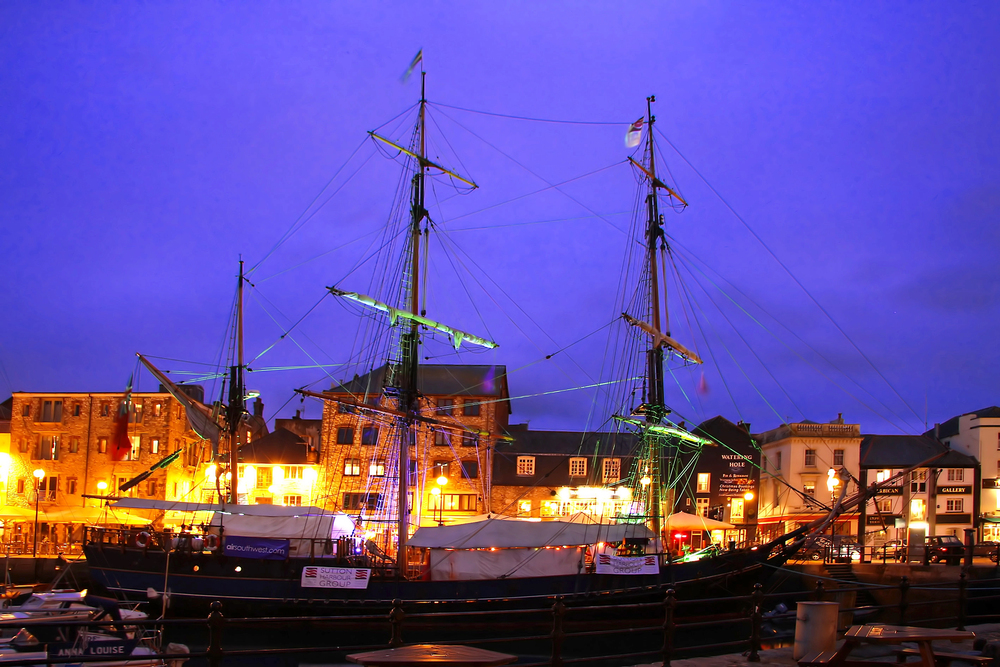
These fading destinations remind us that no human settlement, however prosperous, is guaranteed permanent success. Economic changes, environmental challenges, and human conflicts continue to transform bustling communities into historical curiosities.
Modern visitors to these sites find powerful reminders of impermanence and change. These places preserve important lessons about sustainability, adaptation, and the constant evolution of human society.
More from Travel Pug

- 20 Towns Built for One Purpose That Were Later Abandoned
- 15 Hidden Spots in Disney World’s Magic Kingdom Most Visitors Miss
- 20 Photos of the World’s Most Beautiful Glacial Lakes
- 15 Canyons in the U.S. That Are Just as Stunning as the Grand Canyon
- 10 Under-the-Radar Mountain Towns That Are Both Affordable and Beautiful
Like Travel Pug’s content? Follow us on MSN.
